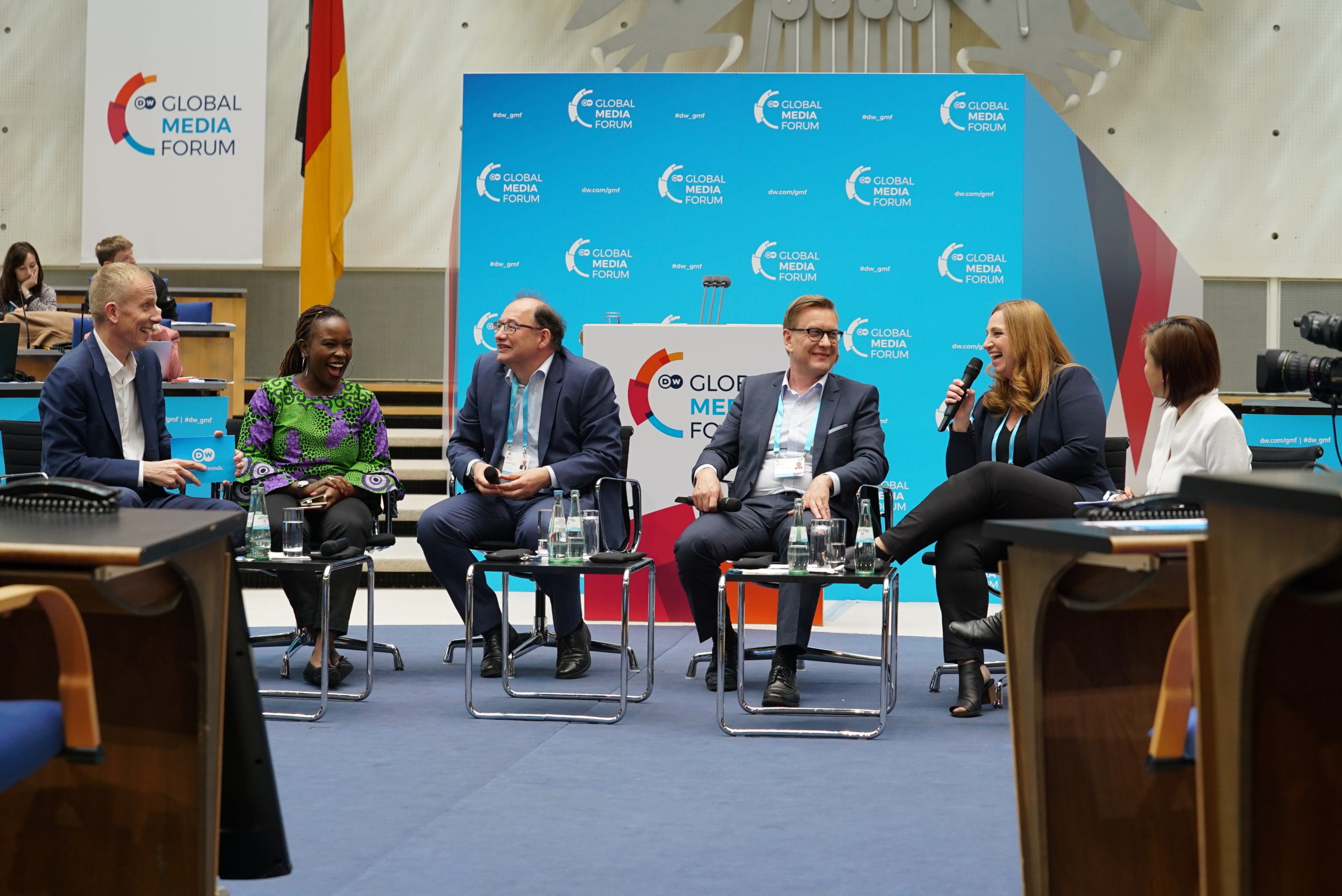by Lejla Kratina
After the short introduction about aritificial intelligence already being made by China in the sphere of journalism and many other areas presented by Edith Young (China Internet expert and venture capitalist), we had the chance to listen and to think about the opportunites and challenges of AI in the media. The panel speakers included Nanjira Sambuli (World Wide Web Foundation), Joachim Köhler (Head of NetMedia Department), Atte Jääskeläinen (LUT School of Business and Management), Li L’Estrade (MittMedia), Edith Yeung and moderated by Guido Baumhauer (Deutsche Welle).
The discussion gave insight in how we could solve some media challenges with the help of machine learning. One example is using artificial intelligence for the content curation so stories could be shown according to the users preferences. This could give good opportunity to the journalists to understand better their audience’s needs and interests.
“The real value in content creation is in collaboration between humans and the machines.”
-Atte Jääskeläinen
The machines are not only able to collect the data and to analyze it but they are also capable of monitoring the world in ways that humans could never do. Exactly these capabilities could be used in journalism because the quantity of data used in media is the perfect ground to operate and analyse big data.
“Problem yet won’t be data but what kind of data is been fed to the system. ”
– Nanjira Sambuli
Burning question is what kind of data do we work with. Biased data could be a big problem, and it is a role of the journalists to tackle this issue and to put in the center the risk and challenges of it, as well as the opportunities that artificial intelligence presents.
“It is both about who is bulding the AI and what data you have. Turning this issue in context of journalism, I think there is also a good opportunity for journalist to use artificial intelligence as a mirror for their own biases. ”
-Atte Jääskeläinen
The technology is inevitably moving forward and it is our responsibility to determe in which direction it goes. The first step is to question our own attitudes and moral values, so that we can provide the right data for the machines to use.





